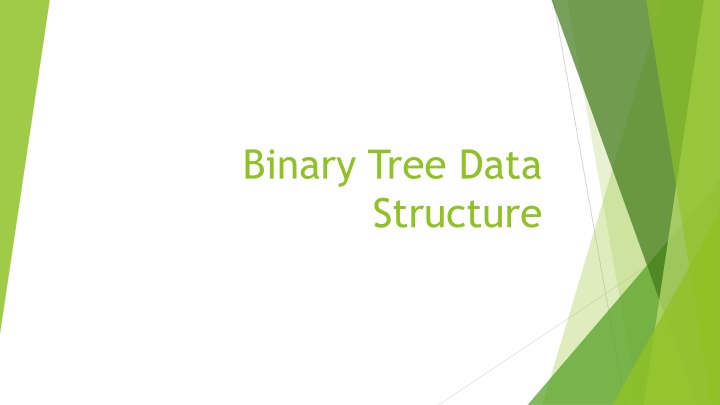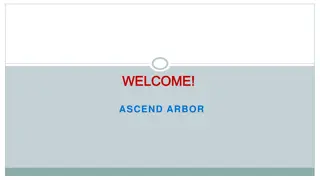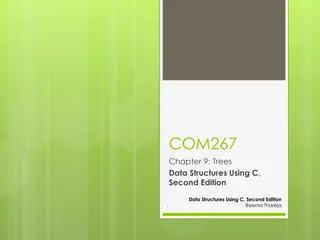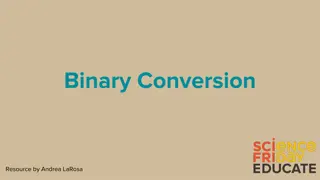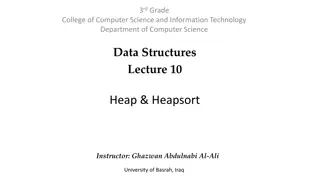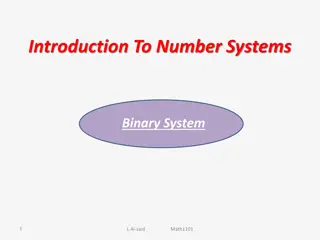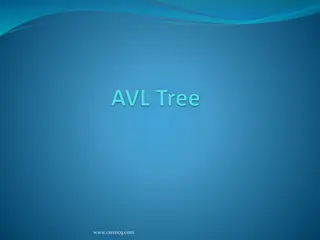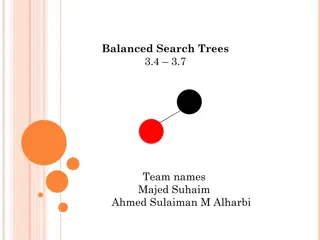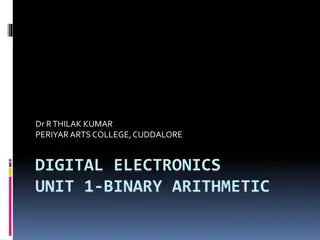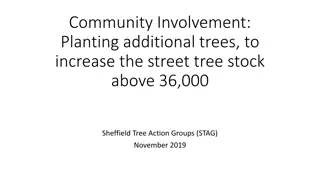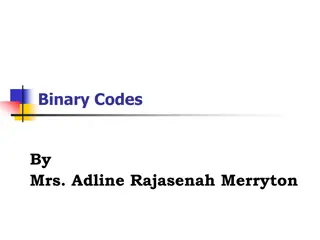Binary Tree Data Structure
Proton holography explores phase reconstruction in elastic proton-proton scattering and binary stars through Levy expansion, convergence properties, and model-independent concepts. The research, presented at conferences in Hungary, delves into formalisms, abilities, and conclusions drawn from the study. The stellar interferometry aspect focuses on new results in binary star systems. The approach combines theoretical modeling and experimental evidence to further understand holography principles.
Download Presentation

Please find below an Image/Link to download the presentation.
The content on the website is provided AS IS for your information and personal use only. It may not be sold, licensed, or shared on other websites without obtaining consent from the author.If you encounter any issues during the download, it is possible that the publisher has removed the file from their server.
You are allowed to download the files provided on this website for personal or commercial use, subject to the condition that they are used lawfully. All files are the property of their respective owners.
The content on the website is provided AS IS for your information and personal use only. It may not be sold, licensed, or shared on other websites without obtaining consent from the author.
E N D
Presentation Transcript
Binary Tree Data Structure
Binary Tree A tree whose elements have at most 2 children is called a binary tree. Since each element in a binary tree can have only 2 children, we typically name them the left and right child. A Binary Tree node contains following parts. Data Pointer to left child Pointer to right child
Properties of binary : The maximum number of nodes at level l of a binary tree is 2l-1. Maximum number of nodes in a binary tree of height h is 2h 1. In a Binary Tree with N nodes, minimum possible height or minimum number of levels is ? Log2(N+1) ? A Binary Tree with L leaves has at least ? Log2L ? + 1 levels. In Binary tree where every node has 0 or 2 children, number of leaf nodes is always one more than nodes with two children.
Types of Binary Tree Full Binary Tree :-A Binary Tree is full if every node has 0 or 2 children. We can also say a full binary tree is a binary tree in which all nodes except leaves have two children. In a Full Binary, number of leaf nodes is number of internal nodes plus 1. Complete Binary Tree: A Binary Tree is complete Binary Tree if all levels are completely filled except possibly the last level and the last level has all keys as left as possible. Perfect Binary Tree A Binary tree is Perfect Binary Tree in which all internal nodes have two children and all leaves are at the same level. A Perfect Binary Tree of height h (where height is the number of nodes on the path from the root to leaf) has 2h 1 node. Balanced Binary Tree A binary tree is balanced if the height of the tree is O(Log n) where n is the number of nodes. For Example, AVL tree maintains O(Log n) height by making sure that the difference between heights of left and right subtrees is at most 1.
Traversing A Tree is typically traversed in two ways: Breadth First Traversal (Or Level Order Traversal) Depth First Traversals Inorder Traversal (Left-Root-Right) Preorder Traversal (Root-Left-Right) Postorder Traversal (Left-Right-Root)
BFS and DFSs of above Tree Breadth First Traversal : 1 2 3 4 5 Depth First Traversals: Preorder Traversal : 1 2 4 5 3 Inorder Traversal : 4 2 5 1 3 Postorder Traversal : 4 5 2 3 1
